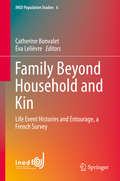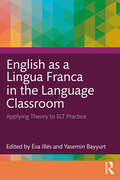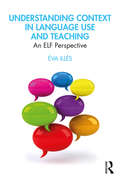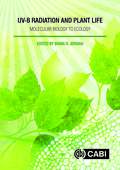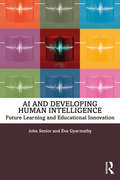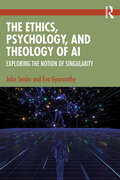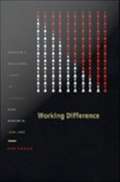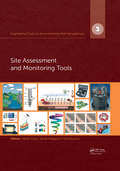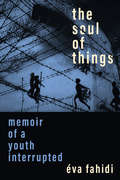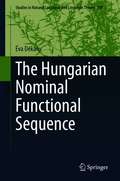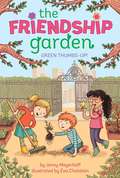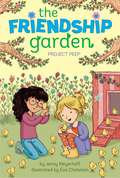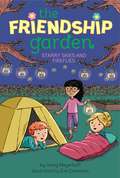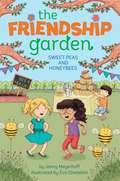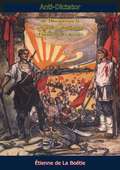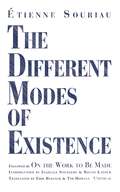- Table View
- List View
Caraway: The Genus Carum
by Éva NémethCaraway, the seventh volume in the series Medicinal and Aromatic Plants - Industrial Profiles, collects together all of the existing information in connection with the biology, chemistry, agrotechnology and utilization of the plant genus Carum. After an overview on all Carum species, it deals mainly with th most important species Carum carvi L. The
Family Beyond Household and Kin
by Catherine Bonvalet Éva LelièvreThis book analyzes the family and residential trajectories of men and women across the twentieth century, which are placed in a long-term generational perspective and in the historical context where they played out. It brings together a set of studies based on data from the Biographies et Entourage (Life Event Histories and Entourage) survey conducted by the Institut National d'Etudes Démographiques (INED) on a representative sample of nearly 3,000 residents of the Paris region born between 1930 and 1950. Inside, readers will discover an insightful analysis of the family that moves away from such traditional concepts as the household or main residence and proposes new ones like the entourage and the residential system. This innovative approach to the family network describes an affective and residential proximity that takes into account the relatives and close friends who have played or continue to play a role in an individual's life. The book first presents a detailed analysis of the Biographies et Entourage survey respondents' parental universe and proposes a practical approach to the notion of parenthood that reveals the family and non-family resources available to individuals. Next, it describes the evolution of the respondents' family networks, both in and beyond the household, and details how these family circles shape their subjective judgments during childhood, adolescence, and adult life. Coverage then goes on to examine the family ties of older adults, the role of grandparents and step-families, the importance of family spaces including often frequented places, and inter-generational family solidarity. Families extend well beyond the walls of the home. Interpersonal relations are constructed throughout the life course and in all the settings where they play out. This book takes this new family reality into account and traces its dynamics across time and space. It provides essential tools for researchers looking to conduct life event history surveys and to develop innovative areas of research in the social sciences.
Routledge International Handbook of Complexity Economics (Routledge International Handbooks)
by Thomas Berger James K. Galbraith W. Brian Arthur John B. Davis Wolfram Elsner Bernd Ebersberger Jean-Philippe Bouchaud Dirk Helbing Giovanni Dosi Hilton L. Root Jing Chen Mauro Gallegati Hardy Hanappi Andreas Pyka Frank Beckenbach Ping Chen Petra Ahrweiler Matthias Müller Alan Kirman Pier Paolo Saviotti Stan Metcalfe Harry Bloch Manuel Scholz-Wäckerle Dominik Hartmann Torsten Heinrich Roger A. McCain K. Vela Velupillai Anita Pelle Pete Barbrook-Johnson Michael Benzaquen Kristina Bogner Carlo Bottai Roy Cerqueti Silvano Cincotti Matteo Cinelli Matteo Coronese Johannes Dahlke Giovanna Ferraro Gaël Giraud Carina I. Hausladen César A. Hidalgo Martina Iori Antonio Iovanella Éva Kuruczleki Linyuan Lü Davide Luzzati Sheri M. Markose Xu Na Karl Naumann-Woleske Marcello Nieddu Marcelo C. Pereira Flávio L. Pinheiro Marco Raberto Roos, Michael W.M. Andrea Roventini Moura, Fernanda Senra de Max Sina Knicker Leilei Shi Y. N. Tang Paul Valcke Maria Enrica Virgillito Bing-Hong Wang Shuqi Xu Victor M. Yakovenko Marcell Zoltán VéghThe Routledge International Handbook of Complexity Economics covers the historical developments and early concerns of complexity theorists and brings them into engagement with the world today.In this volume, a distinguished group of international scholars explore the state of the art of complexity economics, and how it may deliver new and relevant insights to the challenges of the 21st century. Complexity science started in 1899 when Henri Poincaré described the three-body problem. The first approaches in economics emerged somewhat later, in the 1980s, driven by the Brussels-Austin school. Since then, complexity economics has gone through numerous developments: departing from linear simplifications, applying physical algorithms, to evolutionary economics and big data. This book covers the basic principles and methods, and offers an overview of the various domains—ranging from diverse fields of productivity studies, agricultural economics, to monetary economics—as well as the current challenges such as climate change, epidemics and economic inequality where complexity economics can provide insight. It closes with a review of complexity political economy and policy.Offering a vibrant alternative to orthodox economics, this handbook is a crucial resource for advanced students, researchers and economists across the disciplines of heterodox economics, economic theory and econophysics.
English as a Lingua Franca in the Language Classroom: Applying Theory to ELT Practice
by Yasemin Bayyurt Éva IllésThis new text is a guide for understanding, envisioning, and acting on the lessons of English as a Lingua Franca (ELF) research in English Language Teaching (ELT) classrooms. The volume is the result of the cooperation of an international team that includes members involved in research, teacher education, and classroom practice. This collection bridges theory, methodology, and real-world application of ELF research for the first time. Chapters offer a variety of practical perspectives and support teachers to better prepare their students for the reality of how the English language is used around the world today. With close attention to the nuts and bolts of teaching – as well as useful features for further investigation, discussion, and application – this book will be a helpful, practical resource for current and prospective English language teachers, teacher trainers and mentors, and curriculum designers.
Understanding Context in Language Use and Teaching: An ELF Perspective
by Éva IllésThis book is a guide to understanding and applying the essential, heretofore elusive, notion of context in language study and pedagogy. Éva Illés offers a new, critical, systematic theoretical framework, then applies that framework to practical interactions and issues in communicative language teaching rooted in English as a Lingua Franca. By linking theory and practice for research and teaching around the world, this book brings a new awareness of how context can be conceptualised and related to language pedagogy to advanced students, teachers, teacher educators and researchers of language teaching, applied linguistics and pragmatics.
UV-B Radiation and Plant Life: Molecular Biology to Ecology
by Marcel Jansen Pedro J. Aphalo Amy T. Austin Carlos L. Ballaré Paul W. Barnes Susanne Baldermann Melanie Binkert Janet F. Bornman Isabelle N. Bottger Stephan D. Flint Franziska S. Hanschen Éva Hideg Gareth I. Jenkins Karel Klem Susanne Neugart Monika Schreiner Åke Strid Mark A. Tobler Roman Ulm Otmar Urban Jason Wargent Melanie WiesnerUltraviolet-B radiation (UV-B) has profound effects on plant growth and development, and exposure varies with ozone depletion and across geographic regions, with ecosystem and agricultural consequences. This book deals with large-scale impacts but also how UV-B affects plants at the molecular level is also fascinating, and the UV-B photoreceptor has only recently been characterised. While UV-B radiation can be damaging, it also has a more positive role in plant photomorphogenesis. Consequently UV-B treatments are being developed as innovative approaches to improve horticulture. This book is a timely synthesis of what we know and need to know about UV-B radiation and plants.
AI and Developing Human Intelligence: Future Learning and Educational Innovation
by John Senior Éva GyarmathyAs the relationship between AI machines and humans develops, we ask what it will mean to be an intelligent learner in an emerging, socio-dynamic learningscape. The need for a new global view of intelligence and education is the core discussion of this future-focussed collection of ideas, questions, and activities for learners to explore. This fascinating guide offers activities to understand what needs to be changed in our educations systems and our view of intelligence. As well as exploring AI, HI, the future of learning and caring for all learners, this book addresses fundamental questions such as: How do we educate ourselves for an increasingly uncertain future? What is the purpose of intelligence? How can a curriculum focussing on human curiosity and creativity be created? Who are we and what are we becoming? What will we invent now that AI exists? AI and Developing Human Intelligence will interest you, inform you, and empower your understanding of "intelligence" and where we are going on the next part of our journey in understanding what it is to be human now and tomorrow.
The Ethics, Psychology, and Theology of AI: Exploring the Notion of Singularity
by John Senior Éva GyarmathyThis book explores the profound impact of artificial intelligence psychology (AIPsy) on human psychology, identity, theology, and agency, addressing the urgent need to define the future of humanity amidst evolving technological landscapes.The book challenges traditional notions of human uniqueness and agency, contemplating the transformative potential of a technological singularity where AI may surpass human intelligence, rendering civilization obsolete. Divided into four sections, it covers the psychological implications of AI on human cognition and behaviour, analyzes theological perspectives on AI, re-examines agency and identity in the age of AI, and fosters a multidisciplinary dialogue synthesizing insights from psychology, theology, ethics, philosophy, computer science, and sociology. Key chapters explore human-AI interaction, trust in AI, and the emerging field of artificial intelligent machine psychology (AIPsy), alongside theological dilemmas, divine intelligence, moral responsibility, and the legal rights of creative intelligent machines.Positioned as a critical resource for scholars, researchers, theologians, ethicists, psychologists, and policymakers, the book aims to deepen our understanding of the complex relationship between humanity and AI, guiding informed decisions and ethical considerations in the transformative era of AI.
The Mental Health of Gifted Intelligent Machines: AI and the Mirror of Human Psychology
by John Senior Éva GyarmathyThe Mental Health of Gifted Intelligent Machines explores the increasingly sophisticated behaviours of developing AI and how we can ensure it will have emotional resilience, ethical strength and an ability to think in a new and enhanced way. Its primary aim is to change how we understand the world by investigating humanity as an intelligent being, examining and contrasting human and artificial intelligence. The book considers what we can learn from the likely mental health issues that will occur with increasingly sophisticated aspects of machine intelligence and how they will reflect the human condition. It asks questions about our identity in a deeply uncertain and disruptive ever-changing world; how we will improve and enhance our psychological intelligence to meet the increasing complications and demands of the future; and what we need to do, now, to be psychologically intelligent enough to live a full meaningful life in a new world evolving around us. The book argues that changes in our understanding of mental health, psychology and our view of intelligence will challenge huge aspects of our fundamental beliefs and assumptions and that it is essential we explore new arenas to further understand both our own human psychological issues and mental health as we develop gifted intelligent machines. It is a must read for all students, researchers and professionals involved with AI, gifted education, consciousness and mental health.
Rhythms of Revolt: European Traditions And Memories Of Social Conflict In Oral Culture
by David Hopkin Éva Guillorel William G. PooleyThe culture of insurgents in early modern Europe was primarily an oral one; memories of social conflicts in the communities affected were passed on through oral forms such as songs and legends. This popular history continued to influence political choices and actions through and after the early modern period. The chapters in this book examine numerous examples from across Europe of how memories of revolt were perpetuated in oral cultures, and they analyse how traditions were used. From the German Peasants’ War of 1525 to the counter-revolutionary guerrillas of the 1790s, oral traditions can offer radically different interpretations of familiar events. This is a ‘history from below’, and a history from song, which challenges existing historiographies of early modern revolts.
Working Difference: Women's Working Lives in Hungary and Austria, 1945-1995
by Éva FodorWorking Difference is one of the first comparative, historical studies of women's professional access to public institutions in a state socialist and a capitalist society. va Fodor examines women's inclusion in and exclusion from positions of authority in Austria and Hungary in the latter half of the twentieth century. Until the end of World War II women's lives in the two countries, which were once part of the same empire, followed similar paths, which only began to diverge after the communist takeover in Hungary in the late 1940s. Fodor takes advantage of Austria and Hungary's common history to carefully examine the effects of state socialism and the differing trajectories to social mobility and authority available to women in each country. Fodor brings qualitative and quantitative analyses to bear, combining statistical analyses of survey data, interviews with women managers in both countries, and archival materials including those from the previously classified archives of the Hungarian communist party and transcripts from sessions of the Austrian Parliament. She shows how women's access to power varied in degree and operated through different principles and mechanisms in accordance with the stratification systems of the respective countries. In Hungary women's mobility was curtailed by political means (often involving limited access to communist party membership), while in Austria women's professional advancement was affected by limited access to educational institutions and the labor market. Fodor discusses the legacies of Austria's and Hungary's "gender regimes" following the demise of state socialism and during the process of integration into the European Union.
Engineering Tools for Environmental Risk Management: 2. Environmental Toxicology (Engineering Tools for Environmental Risk Management)
by Katalin Gruiz Tamás Meggyes Éva FenyvesiChemical substances, physical agents and built structures exhibit various types of hazard due to their inherent toxic, mutagenic, carcinogenic, reprotoxic and sensitizing character or damaging to the immune and hormone system. The first steps in managing an environment contaminated by chemical substances are characterization of hazards and quantifi
Engineering Tools for Environmental Risk Management: 3. Site Assessment and Monitoring Tools (Engineering Tools for Environmental Risk Management #3)
by Katalin Gruiz Éva Fenyvesi TamásThis is the third volume of the five-volume book series “Engineering Tools for Environmental Risk Management”. The book series deals with the following topics: • Environmental deterioration and pollution, management of environmental problems• Environmental toxicology – a tool for managing chemical substances and contaminated environment• Assessment and monitoring tools, risk assessment• Risk reduction measures and technologies• Case studies for demonstration of the application of engineering tools The authors aim to describe interactions and options in risk management by providing a broad scientific overview of the environment, its human uses and the associated local, regional and global environmental problems; interpreting the holistic approach used in solving environmental protection issues; striking a balance between nature’s needs and engineering capabilities; understanding interactions between regulation, management and engineering; obtaining information about novel technologies and innovative engineering tools. This third volume provides an overview on the basic principles, concepts, practices and tools of environmental monitoring and contaminated site assessment. The volume focuses on those engineering tools that enable integrated site assessment and decision making and ensure an efficient control of the environment. Some topics supporting sustainable land use and efficient environmental management are listed below: • Efficient management and regulation of contaminated land and the environment;• Early warning and environmental monitoring;• Assessment of contaminated land: the best practices;• Environmental sampling;• Risk characterization and contaminated matrix assessment;• Integrated application of physical, chemical, biological, ecological and (eco) toxicological characterization methods;• Direct toxicity assessment (DTA) and decision making;• Online analyzers, electrodes and biosensors for assessment and monitoring of waters.;• In situ and real-time measurement tools for soil and contaminated sites;• Rapid on-site methods and contaminant and toxicity assessment kits;• Engineering tools from omics technologies, microsensors to heavy machinery;• Dynamic characterization of subsurface soil and groundwater using membrane interface probes, optical and X-ray fl uorescence and ELCAD wastewater characterization;• Geochemical modeling: methods and applications;• Environmental assessment using cyclodextrins. This book series focuses on the state of knowledge about the environment and its conscious and structured application in environmental engineering, management and decision making.
Engineering Tools for Environmental Risk Management: 4. Risk Reduction Technologies and Case Studies (Engineering Tools for Environmental Risk Management #4)
by Katalin Gruiz Tamás Meggyes Éva FenyvesiThe four volumes of the book series "Engineering Tools for Environmental Risk Management" deal with environmental management, assessment & monitoring tools, environmental toxicology and risk reduction technologies. This last volume focuses on engineering solutions usually needed for industrial contaminated sites, where nature’s self-remediation is inefficient or too slow. The success of remediation depends on the selection of an increasing number of conventional and innovative methods. This volume classifies the remedial technologies and describes the reactor approach to understand and manage in situ technologies similarly to reactor-based technologies. Technology types include physicochemical, biological or ecological solutions, where near-natural, sustainable remediation has priority. <P><P>A special chapter is devoted to natural attenuation, where natural changes can help achieve clean-up objectives. Natural attenuation and biological and ecological remediation establish a serial range of technologies from monitoring only to fully controlled interventions, using ‘ just’ the natural ecosystem or sophisticated artificial living systems. Passive artificial ecosystems and biodegradation-based remediation – in addition to natural attenuation – demonstrate the use of these ‘green’ technologies and how engineering intervention should be kept at a minimum to limit damage to the environment and create a harmonious ecosystem. <P><P>Remediation of sites contaminated with organic substances is analyzed in detail including biological and physicochemical methods. Comprehensive management of pollution by inorganic contaminants from the mining industry, leaching and bioleaching and acid mine drainage is studied in general and specifically in the case of an abandoned mine in Hungary where the innovative technology of combined chemical and phytostabilization has been applied. <P><P>The series of technologies is completed by electrochemical remediation and nanotechnologies. Monitoring, verification and sustainability analysis of remediation provide a comprehensive overview of the management aspect of environmental risk reduction by remediation. This book series focuses on the state of knowledge about the environment and its conscious and structured application in environmental engineering, management and decision making.
The Soul of Things: Memoir of a Youth Interrupted
by Éva FahidiAn exceptional document of an extraordinary life, The Soul of Things is the memoir of Holocaust survivor Éva Fahidi. Since the memoir was first published in Hungarian in 2004 under the title Anima Rerum, Fahidi has become a household name in Hungary and in Germany. Featured in countless interviews and several prize-winning documentary films, at the age of ninety-five she is a frequent speaker at Holocaust commemorations in Hungary, Germany, and elsewhere. The Soul of Things combines a rare depiction of upper-middle-class Jewish life in pre-war Hungary with the chronicle of a woman’s deportation and survival in the camps. Fahidi is a gifted writer with a unique voice, full of wisdom, humanity, and flashes of dark humour. With an unsentimental, philosophical perspective, she recounts her journey from the Great Hungarian Plain to the extermination camp of Auschwitz-Birkenau, the forced labour camp of Münchmühle, and back. The English edition includes a new introduction by historians Éva Kovács and Judith Szapor, the original prefaces to the Hungarian and German editions, an essay on the Münchmüle Camp by Fritz Brinkman-Frisch, and extensive notes providing historical and cultural context for Fahidi’s narrative.
The Hungarian Nominal Functional Sequence (Studies in Natural Language and Linguistic Theory #100)
by Éva DékányThe Hungarian Nominal Functional Sequence combines the methods of syntactic cartography with evidence from compositional semantics in a comprehensive exploration of the structure of Noun Phrases. Proceeding from the lexical core to the top of DP, it uses Hungarian as a window on the underlying universal functional hierarchy of Noun Phrases, but it also regularly complements and supports the analysis with cross-linguistic evidence. The book works out a minimal map of the extended NP in the sense that the proposed hierarchy only has projections which host overt material and it does not draw on semantically empty word order projections. Topics which receive special attention include the syntax of classifiers, demonstratives, proper names, possessive NPs and plural pronouns.
A Squirmy, Wormy Surprise
by Éva Chatelain Jenny MeyerhoffAnna starts a new school year with a new teacher who is very different in this sixth book in the Friendship Garden series.It’s a new school year, which means new books, new sharpened pencils, and a new beginning! Anna’s excited to start fourth grade, but she’s not excited about her fourth-grade teacher, Miss Lopez. Miss Lopez is nothing like Mr. Hoffman, Anna’s third grade teacher. For starters, Miss Lopez is S-T-R-I-C-T. She doesn’t allow talking or humming or anything fun. Not only that, but she seems to dislike Anna right off the bat. When Miss Lopez doesn’t pick Anna to help out in the class’s new butterfly garden, Anna realizes she needs to make Miss Lopez like her, once and for all. And she’s willing to do whatever it takes! But how do you force someone like you…especially a teacher?
Green Thumbs-Up!
by Éva Chatelain Jenny MeyerhoffTo make a new city feel like home, Anna gets involved with a community garden--and cultivates new friendships as well as flowers and vegetables--in the first book in the Friendship Garden series.It may be the orange and red season of fall, but eight-year-old Anna Fincher feels nothing but gray. She and her family have just moved to Chicago for her mom's new job. Not only does Anna miss her tiny hometown and her true-blue best friends, but she misses her garden. Over the summer she and her friends had been growing big red tomatoes, bright green beans, and pink raspberries on a small plot of land in Anna's backyard. Now, just when it's fall harvest time back home, Anna is stuck in a boring apartment with no yard, and starting a brand-new school with kids who are anything but friendly. Until one day Anna makes an amazing discovery: a little community garden right in the middle of the city. And a small idea begins to take root in a big way. What if a bunch of kids took over a neglected, forgotten little garden plot? Could they make anything bloom--even friendship?
Project Peep
by Éva Chatelain Jenny MeyerhoffAnna and her community gardening friends spring into action to help raise baby chicks in the third book in the Friendship Garden series.When Anna moved to Chicago, Kaya became her first real friend, so for her birthday Anna is determined to give Kaya the best present ever! The problem is, the thing Kaya wants more than anything is a pet, but her parents have a strict no-pets rule. Then Anna remembers that Mr. Hoffman's third-grade class just hatched baby chicks! Anna decides that rather than sending the chicks back to the farm, she'll convince her teacher to let the Friendship Garden raise them, so Kaya can have a pet of her own. But raising chicks is no easy task. It requires supplies (that cost money) and building things like a coop and a run. How is Anna supposed to get everything ready and keep it a surprise...especially when Anna and Kaya usually hang out every day? Kaya begins to suspect "fowl play" and assumes Anna is ditching her as a friend! Anna feels terrible and what was supposed to be the best birthday present ever quickly turns into the worst one. Will Anna be able to come up with a way to win her best friend back before the chicks get sent back to the farm for good?
Pumpkin Spice
by Éva Chatelain Jenny MeyerhoffAnna and her community gardening friends are excited for the Windy City Pumpkin Fest but then their prize pumpkin disappears in the second book in the Friendship Garden series.Autumn has arrived at the Friendship Garden! That means: 1. Pumpkins for carving 2. Sweet potatoes for eating 3. Piles of leaves for jumping Besides tons of yummy fall food, Anna is excited for the Windy City Pumpkin Fest. There is going to be a bake-off, a moon bounce--even a biggest pumpkin contest! Anna, Kaya, and Reed are sure that their pumpkin, Herbert, will take home first prize. But just two days before the contest, Herbert disappears! Kaya and Anna are sure someone stole their perfect pumpkin. After all, pumpkins can't just get up and walk away by themselves. Can the Friendship Garden crew catch the orange-fingered thief in time for the festival?
Starry Skies and Fireflies
by Éva Chatelain Jenny MeyerhoffThe fifth book in the Friendship Garden series finds Anna and her friends sleeping under the stars in the garden’s first-ever urban campout!Calling all campers! The Friendship Garden is having a summer sleepover under the stars! Get ready for: 1. Ooey, gooey s’mores 2. Toasty camp fires 3. Ghosts?? Anna is excited for an end-of-summer party with her friends, but she is NOT excited for creepy stories. Anna doesn’t like the dark…or being scared! But her buddies at the Friendship Garden want to tell ghost stories and play scary games! And Anna doesn’t want to look like a ‘fraidy cat, so she decides that she’ll just skip the party instead. Can Anna’s friends convince her that being scared is sometimes fun? Or will she miss out on the Friendship Garden’s party of the year?
Sweet Peas and Honeybees
by Éva Chatelain Jenny MeyerhoffAnna and her friends throw a Summer Bee Bash in the fourth book in the Friendship Garden series.The Friendship Garden summer program is in full swing. The summer session, called Sweet Peas and Honeybees, is going to be all about flowers...and bugs. Anna hates bugs! But her little brother, Colin, loves them. And now he's going to be following Anna around all summer long. B-L-E-C-H. The gardeners also meet Mr. Munoz, a beekeeper who lives nearby. He tells them all about how important bees are to gardens. When Anna finds out that the honeybees are in danger because of colony collapse disorder, she becomes obsessed with saving them. Maybe too obsessed! Kaya, Reed, and Bailey miss seeing Anna, who spends all of her time thinking of ways to rescue honeybees, and not enough time with her friends. At the same time, Anna's little brother, Colin, won't stay out of her way, and Anna just wants him to buzz off. Can Anna save the bees...or will her buzzing new hobby keep her friends far away?
Borondatezko morrontzari buruzko mintzaldia
by Juan Kruz Igerabide Sarasola Étienne de la BoétieJende dohakabe gaixoa, herri burugabea, gaitzean tematurik eta onuraren aurrean itsu zaudeten nazioak! Ondasunik eder eta argienak kentzen uzten duzue muturraren aurrean, zuen soroak suntsitzen, zuen etxeak lapurtzen eta zuen arbasoek utzitako altzariak bipiltzen! Bizi zareten moduan, jada ez da ezer zuena. Badirudi, gainera, zorion handitzat hartzen duzuela zuen ondasunen erdia kentzea, familiaren erdia, bizitzaren erdia. Eta kalte horiek guztiak, zoritxar horiek guztiak, hondamendi hori guztia, ez datozkizue etsaiengandik, baizik eta etsai bakar batengandik, izatea zeuok eman diozuen harengandik; eta haren alde zoazte adoretsu gerrara, eta haren ospearen alde zuen bizia eskaintzeko ere prest zaudete. Baina gizandi horrek ez du bi begi besterik, bi esku besterik, gorputz bat besterik, hots, gure hirietako ezin konta ahala biztanle horietako edozeinek daukana baino gehiagorik ez.
Anti-Dictator: the Discours sur la servitude volontaire of Étienne de La Boétie
by Étienne de La BoétieThis famous essay asserts that tyrants have power because the people give it to them. La Boetie linked together obedience and domination, a relationship which would be later elaborated by anarchist thinkers. By advocating a solution of simply refusing to support the tyrant, he became one of the earliest advocates of civil disobedience and nonviolent resistance. “To him, the great mystery of politics was obedience to rulers. Why in the world do people agree to be looted and otherwise oppressed by government overlords? It is not just fear, Boetie explains in “The Discourse on Voluntary Servitude,” for our consent is required. And that consent can be non-violently withdrawn.”—Lew Rockwell
The Different Modes of Existence (Univocal)
by Étienne SouriauWhat relation is there between the existence of a work of art and that of a living being? Between the existence of an atom and that of a value like solidarity? These questions become our own each time a reality—whether it is a piece of music, someone we love, or a fictional character—is established and begins to take on an importance in our lives. Like William James or Gilles Deleuze, Souriau methodically defends the thesis of an existential pluralism. There are indeed different manners of existing and even different degrees or intensities of existence: from pure phenomena to objectivized things, by way of the virtual and the &“super-existent,&” to which works of art and the intellect, and even morality, bear witness. Existence is polyphonic, and, as a result, the world is considerably enriched and enlarged. Beyond all that exists in the ordinary sense of the term, it is necessary to allow for all sorts of virtual and ephemeral states, transitional realms, and barely begun realities, still in the making, all of which constitute so many &“inter-worlds.&”

